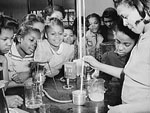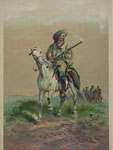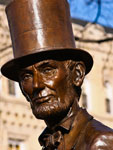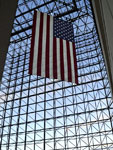Where Experience Meets Practicality
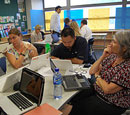
Over the course of the many different TAH grants in which the American Antiquarian Society (AAS) has participated, it has become increasingly clear that listening and sharing are not just skills taught in kindergarten to get children through elementary school. Rather, they are essential skills for life, particularly when your work requires constant collaboration with a wide range of groups, including teachers, scholars, libraries, museums, and school administrators. It has also become clear that it is through listening and sharing with these many different stakeholders that the most rewarding results are achieved. This is where we find ways to make the experiences we provide meet practice in the classroom.
Institutions like museums and libraries have a unique set of resources that can enrich and revive teachers’ intellectual lives and interest in history. Beyond access to primary sources, these institutions can also provide valuable interactions with historians and curators. This is not always easy, however. One of the most common criticisms among teachers throughout our most recent TAH grant has been that while the scholars have offered a lot of interesting information, most of it is inapplicable to their classroom or grade level. In answer to this repeated concern, the TAH team, which included the AAS, Old Sturbridge Village, and the Worcester Public Schools, decided to offer separate sessions with the scholars for the different grade levels, and encouraged the scholars to follow a more informal, interactive lecture format. The feedback has been very positive and the teachers have begun to fully appreciate what specialty speakers have to offer.
This grade-level specific content has also extended to breakout sessions, where elementary and high school teachers are looking for very different pedagogical approaches to the material. In particular, elementary teachers have often commented on the limited time they have to teach Social Studies and History, and are always looking for ways to teach the material quickly and powerfully. One way in which the team has attempted to rectify this problem is to focus on images and graphic arts. Elementary teachers have found that analyzing an image can often provide a poignant and thorough introduction to a historical subject.
Another approach has been to provide ideas about how to make history interdisciplinary, particularly highlighting its ability to connect to the English Language Arts (ELA) curriculum. In some cases, the district’s ELA coordinator has presented at professional development workshops to illustrate how history can become a focal point for teaching ELA. Other workshops on the elementary level have incorporated math and science skills into a history lesson. By adjusting to the teachers’ constraints in the classroom, the professional development we provided became much more applicable and exciting for the teachers.
Finally, the introduction of “teacher-coaches” to the program has been a great buoy to both the coaches and their colleagues. Among the requirements to become a teacher-coach is an independent original research project conducted in the AAS collections. Each of the coaches presents a workshop based on their research at one of the TAH professional development days. The enthusiasm these teacher-coaches gain for their subject through in-depth research brings energy into their workshops, and their ability to translate the material to classroom activities for their colleagues is greatly appreciated. Teachers have overwhelmingly deemed this an excellent opportunity for both the teacher-coaches and their colleagues.
"Shared authority" is a term often heard in the museum world these days, but I think it should also extend to collaborative programs such as TAH. By sharing authority between cultural institutions, scholars, and teachers, by really listening to each other and adjusting, by understanding each group's strengths and needs, we can create programming that is thoughtful, useful, and effective.
